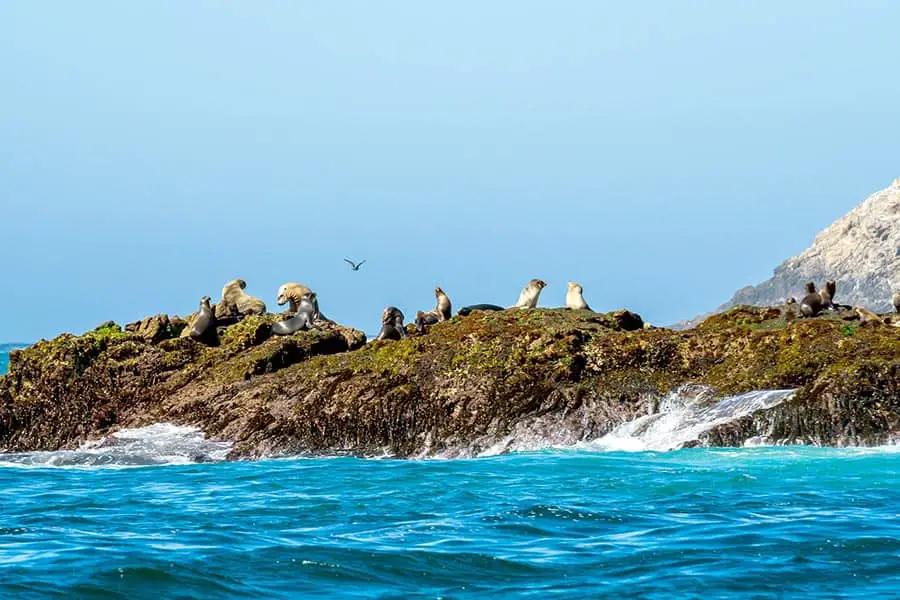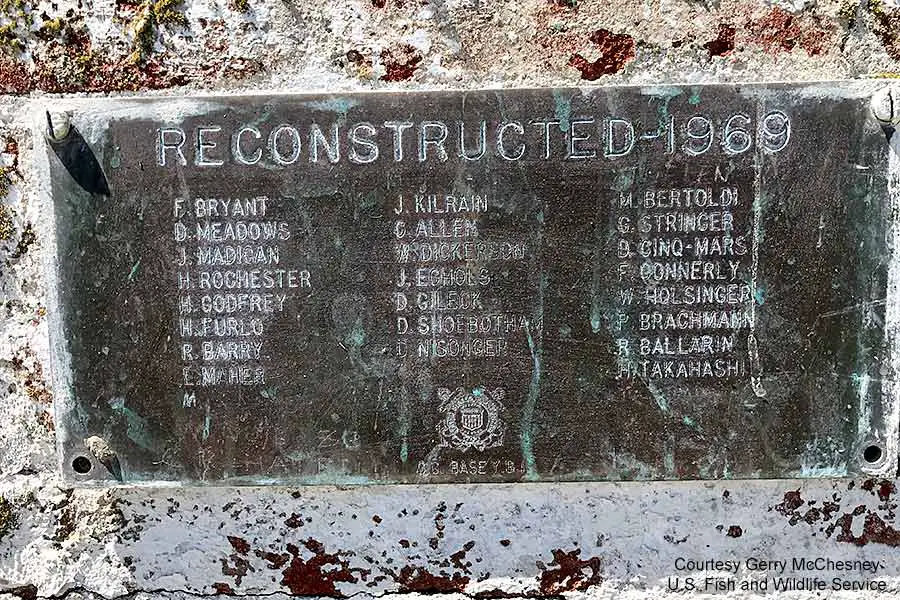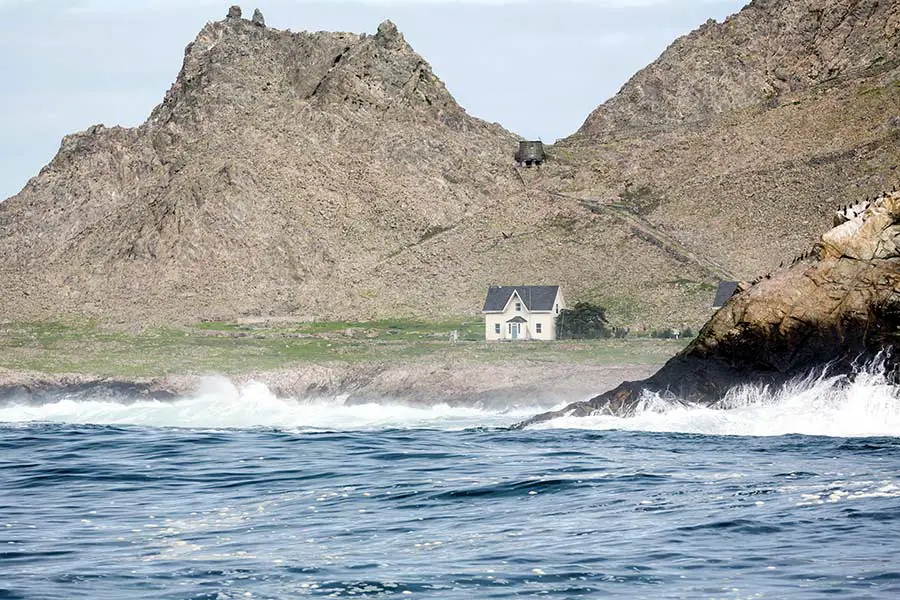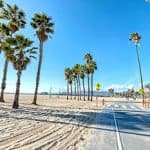
One of the things you have to love about the Bay Area is the mix of big-city amenities and proximity to wilderness. Whether it’s hiking in the mountains, sunning on the beaches, or exploring the waterways, there is always something neat to do. One hidden treasure that the nature lover in you will enjoy is the Farallon Islands.
The Farallon Islands are located in the Pacific Ocean, off the coast of California, about 30 miles west of the Golden Gate. This little archipelago, consisting of small rocky islands and shoals, is sometimes referred to as the Devil’s Teeth Islands because of the many treacherous obstacles in the area.
A sanctuary for nature, the Farallon Islands are ensconced in a 3,295-square-mile wildlife refuge. Visitors to the sanctuary can experience an unspoiled Eden of marine life and can see animals ranging from blue whales and porpoises to tufted puffins and great white sharks. What is the history of these islands, and how can we get there? Read on to learn more about this fantastic place.
The Farallon Islands – What You Need to Know
The Farallon Islands are about thirty miles west of the Golden Gate and about twenty miles south of Point Reyes. The archipelago begins at Southeast Farallon Island, a 95-acre chunk of rock jutting out of the Pacific.
The island chain continues to dot the ocean as it heads Northwest. The Farallons consist of seven named islands. In order, progressing to the Northwest from Southeast Farallon Island, travelers will encounter Seal Rock, Maintop Island, The Drunk Uncle Islets, Aulon Island and Arch Rock, Sugarloaf Island, Sea Lion Rock, and Hurst Shoal.

The Farallon Islands emerged from the sea as part of a massive geological event. Technically part of the Salinian Block, the Farallon Islands are chunks of granitic continental crust that were pushed above water as the Pacific Plate shifted. This fact makes the Farallons geologically part of the Point Reyes Peninsula.
As time went on and plates emerged from the water, the constant motion of the water eroded many of these formations into distinctive towers called sea stacks, pillars, or sea cliffs. These kinds of rocky projections from the water are known as farallón in Spanish, which is the origin of the archipelago’s name.
Long before the Spanish arrived on the California coast, indigenous people referred to these islands as the Islands of the Dead. It is believed that the natives did not travel to the islands, as traveling to and landing on the Farallons would have been perilous; the name they adorned these rocks with also suggests a certain sense of foreboding.
Eventually, American and Russian mariners discovered that profitable resources were abundant on the Farallons. People hunted seals, sea otters, seabirds, and seabird eggs were collected en masse from the islands. Sadly, fur seals were over-harvested, and the local population was completely driven away from the Farallons. (Luckily, fur seals returned to the island in 1996.)
Hunting and harvesting died down some as resources waned. However, seabird eggs were still collected and sold for profit in San Francisco until the federal government evicted egg companies from the islands in 1881.

Their Strategic Location
The location of the Farallon Islands makes them an ideal place for navigational equipment. In 1853, the federal government began installing a lighthouse on Southeast Farallon Island, which became operational in 1855. It would have been sooner, but the Fresnel lens didn’t fit in the original tower, so they had to tear down the tower and build a new one.
The U.S. Weather Bureau established and maintained a weather station on the same island for many years. During WWII, a radio intercept station was built on the island by the U.S. Navy, which enabled the tracking of Japanese and Allied naval vessels in the Western Pacific.
Unfortunately, these islands have also been used as a drop point for nuclear waste. Between the years 1946 and 1970, the Atomic Energy Commission dumped 47,500 55-gallon drums full of radioactive materials – mostly laboratory waste and contaminated materials – into the ocean near the Farallons. The radioactive remains of the USS Independence were also scuttled here. That said, it is likely that most of the radioactive waste has decayed, and the EPA claims there is no threat from this waste.
Other Posts of Interest
- Is Alameda A Manmade Island?
- How Do You Get Around On Angel Island?
- What Is Alcatraz Used For Now?
- Are There Sharks In San Francisco Bay?
Bay Area Answers Fun Fact: In 1863, The Pacific Egg Company and a rival egg hunter named David Batchelder had a shootout on the Farallons in a dispute over harvesting rights. Two men were unfortunately killed, and four were wounded. This incident has become known as The Egg War.
When Were the Farallons Dedicated as a Wildlife Refuge?
In 1909, President Theodore Roosevelt signed an executive order protecting the northern islands of the archipelago from exploitation. In 1969, protections were placed over the entire island chain when it became a national wildlife refuge. The sanctuary boundaries were expanded in 1981 and again in 2015, creating a vast marine sanctuary.

Can You See the Farallon Islands from San Francisco?
On a clear day, you can see the Farallon Islands from San Francisco. However, they are nearly 30 miles out to sea, so they can be quite challenging to spot. If atmospheric conditions are right, the Fata Morgana optical illusion can let you see the islands appearing to ‘float’ above the ocean.
Does Anyone Live on the Farallons?

There are no permanent residents on the Farallon Islands. The U.S. Coast Guard used to have lighthouse-keepers on the island, but they automated the lighthouse in 1972. Currently, researchers from Point Blue Conservation stay on the islands doing ecological research, but there are no permanent residents on these islands.
Can You Visit the Farallon Islands?
Unless you are a research scientist, the Farallon Islands are off-limits for in-person visitation. The ecosystem on these islands thrives without human intervention, and many of the species that call these islands home are sensitive to human activities. However, the curious can check out the California Academy of Sciences’ webcams to get an in person look at what’s happening on the islands.
Are There Sharks or Whales Near the Farallon Islands?
Yes, there are sharks and whales in the waters around the Farallons. The Farallon Islands host a broad selection of sea life. Whale-watchers can expect to see blue whales, gray whales, and humpback whales cresting, blowing, and frolicking in the waters near the Farallons. Shark enthusiasts will enjoy watching out for great white sharks, who have a plentiful supply of prey in the waters around the Farallons.
Can You Go to the Island by Boat?
You cannot dock a private vessel on the island, and local marine conditions are treacherous. Your best option to see the Farallon Islands will be by booking a boat tour.
Boat tours are a great option to see some of the wildlife that calls the Farallons home. The Oceanic Society operates a whale-watching and wildlife-spotting expedition between April and November. Visitors can board the 56-foot Salty Lady and sail out to the archipelago with an experienced team of mariners and nature watchers to spot whales, sea lions, seals, and other marine life around the Farallons.
More adventurous souls can charter a trip with Shark Dive Adventures and experience a cage dive near the Farallons. Why dive in a cage? Because sharks such as the great white like to hunt and patrol near the Farallons, divers may get a chance to see one of these beauties up close and personal.
How Deep is the Ocean Around the Farallon Islands?
Waters near the Farallon islands are more than 6,000 feet deep in places. Despite this deep water, the ocean floor and associated geological features can abruptly rise out of the depths. The area contains many banks and shoals, making it challenging to navigate.
Why are the Farallon Islands Dangerous?
Local meteorological conditions are conducive to fog and mist, which can restrict visibility. The area is also riddled with dangerous shoals and hidden obstacles that can be hazardous to boats. Some of these sit just below the surface and are challenging to see, which makes navigation in the vicinity challenging.
Underscoring this, the Farallon Islands are the site of several prominent shipwrecks. In 1944, the troop ship SS Henry Bergh struck a portion of the island and wrecked. Happily, all aboard survived. The U.S. Navy tugboat USS Conestoga disappeared in the area in 1921 with all hands aboard and was confirmed to be sunk near the islands in 2016.
Private vessels have disappeared in the area as well: in 2007, a prominent computer scientist’s yacht vanished near the Farallons without a trace. In 2012, a racing yacht capsized near the Farallons, killing five of her crew.
The Fascinating Farallons
Despite being visible from the city, these islands are wild, rugged, and largely unspoiled. Strict prohibitions on visitors and advanced ecological research have made these rocky land masses a perfect place for local marine life, who thrive in their natural habitat.
Whenever you are ready to retreat from the urban jungle and get a taste of nature at its finest, book yourself a journey to the Farallons. The sea air, unspoiled lands, and the chance to see amazing fauna such as whales make it well worth the trek.





